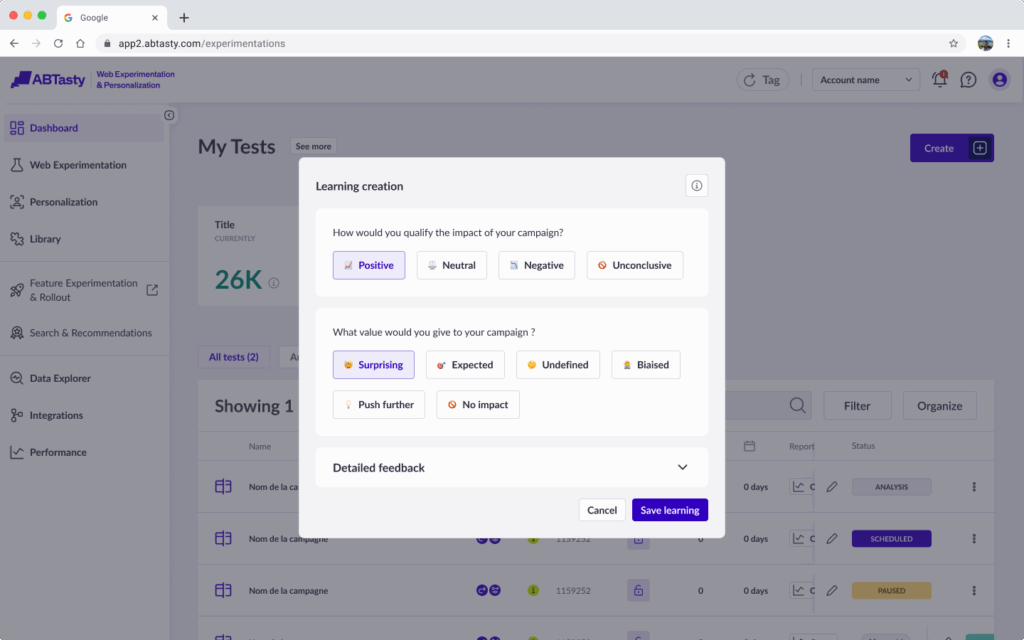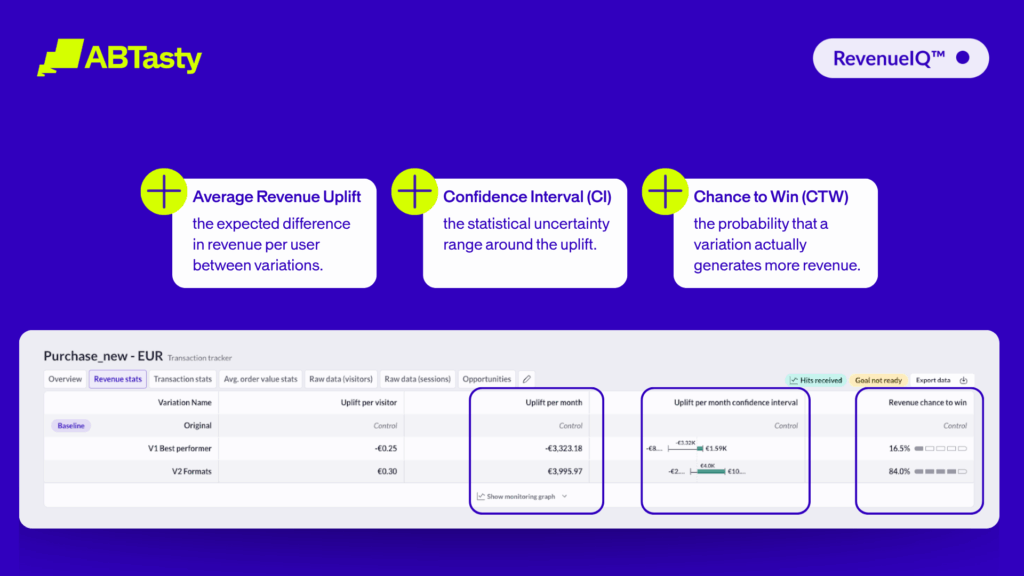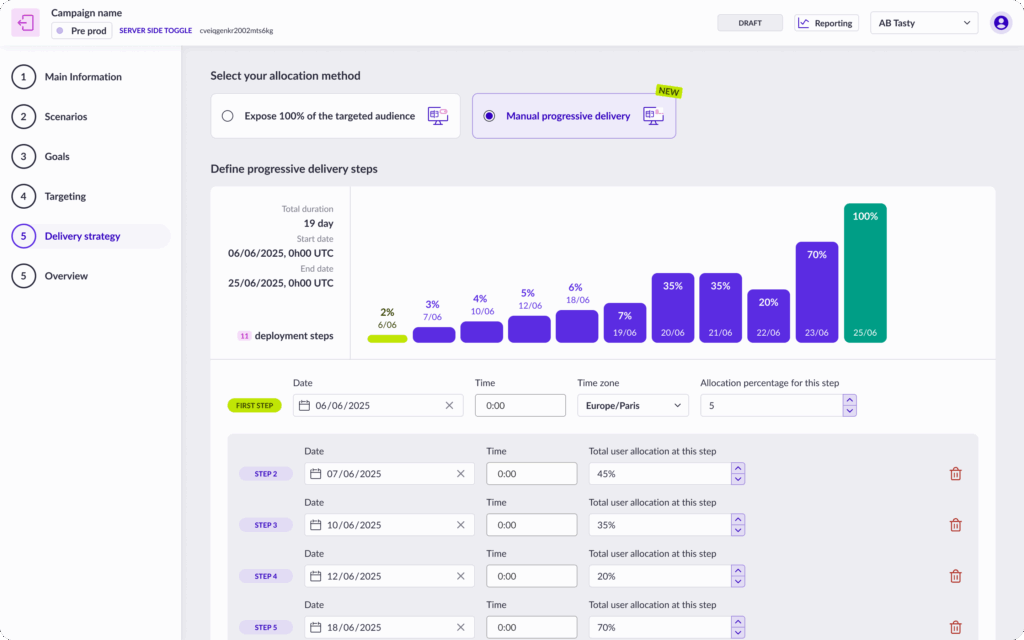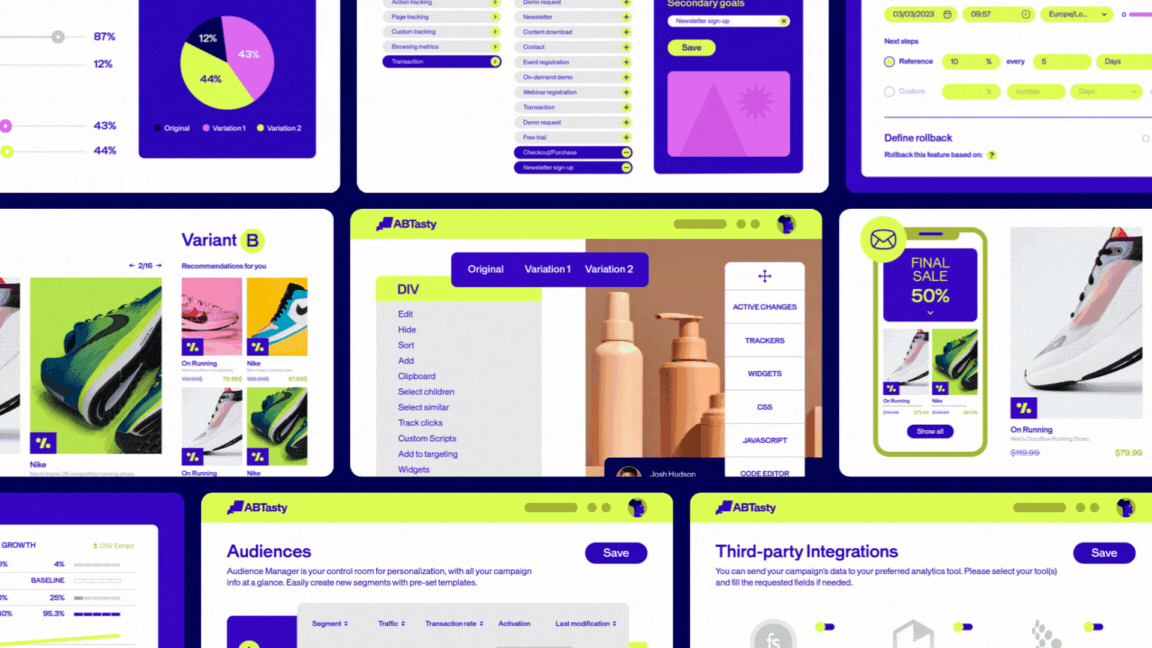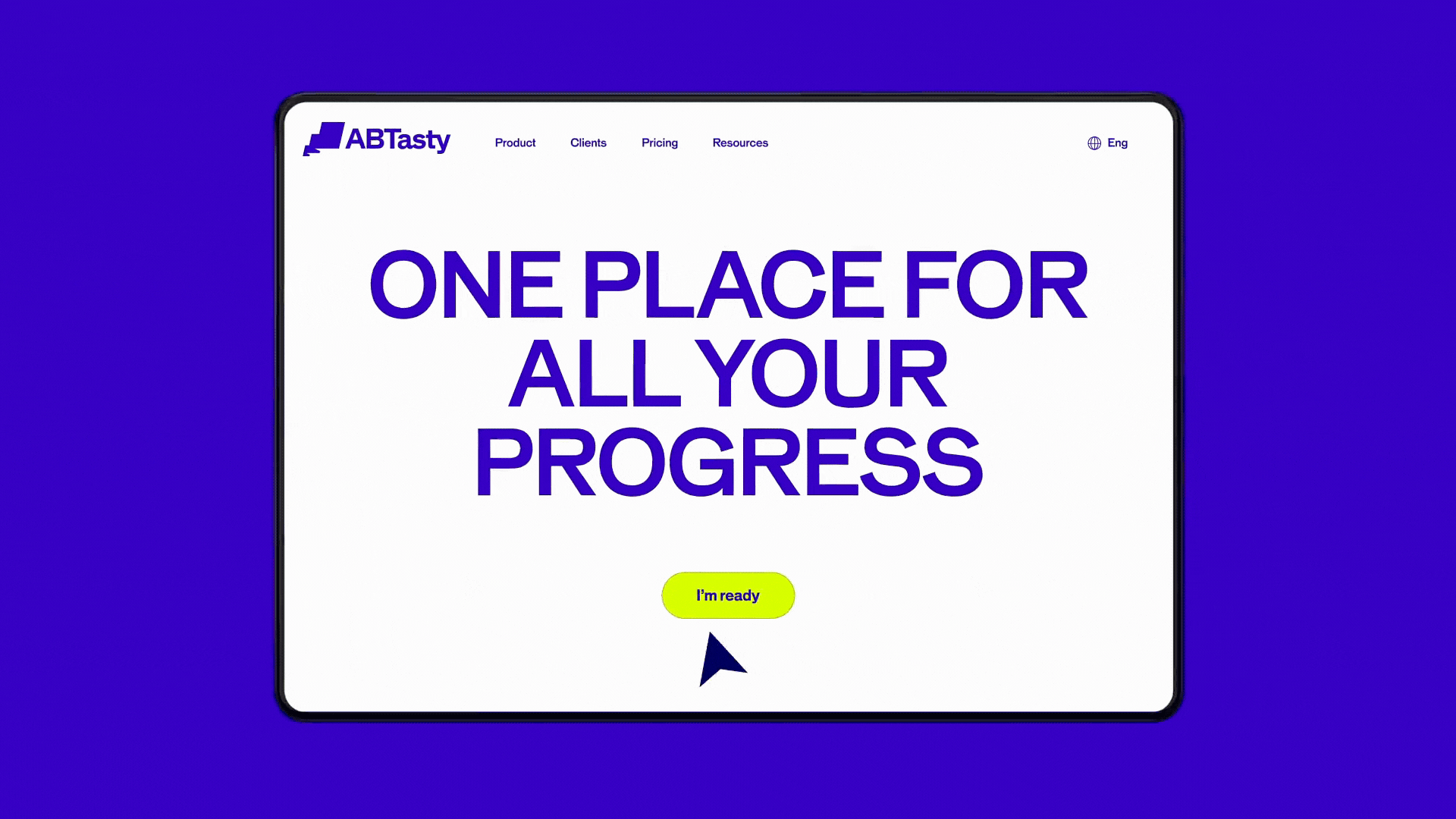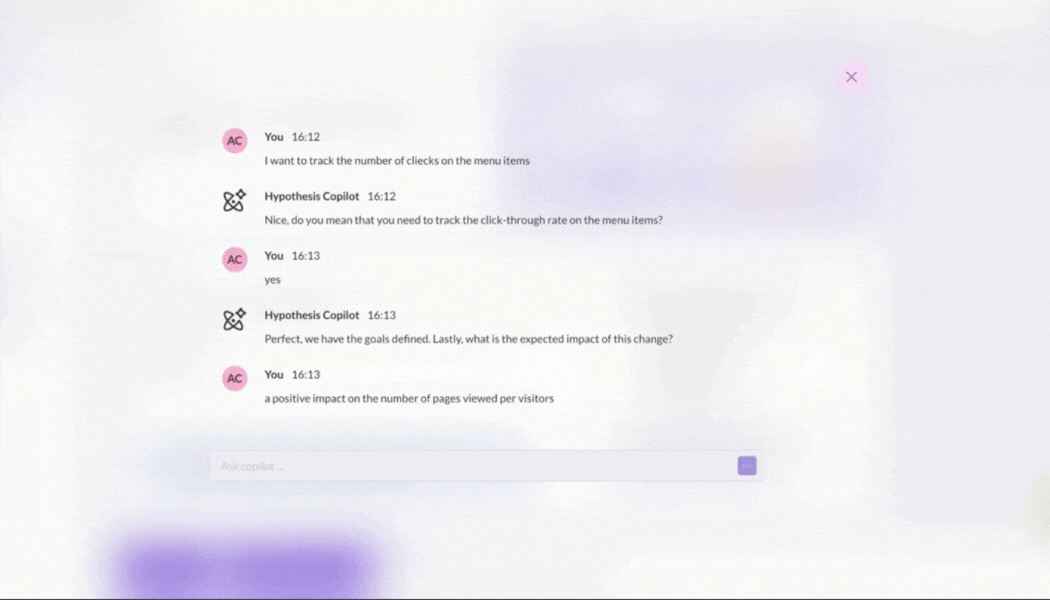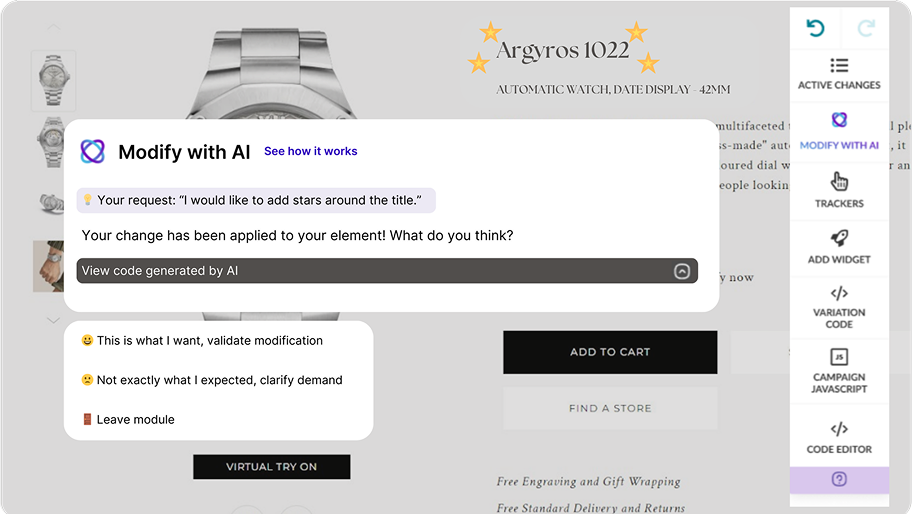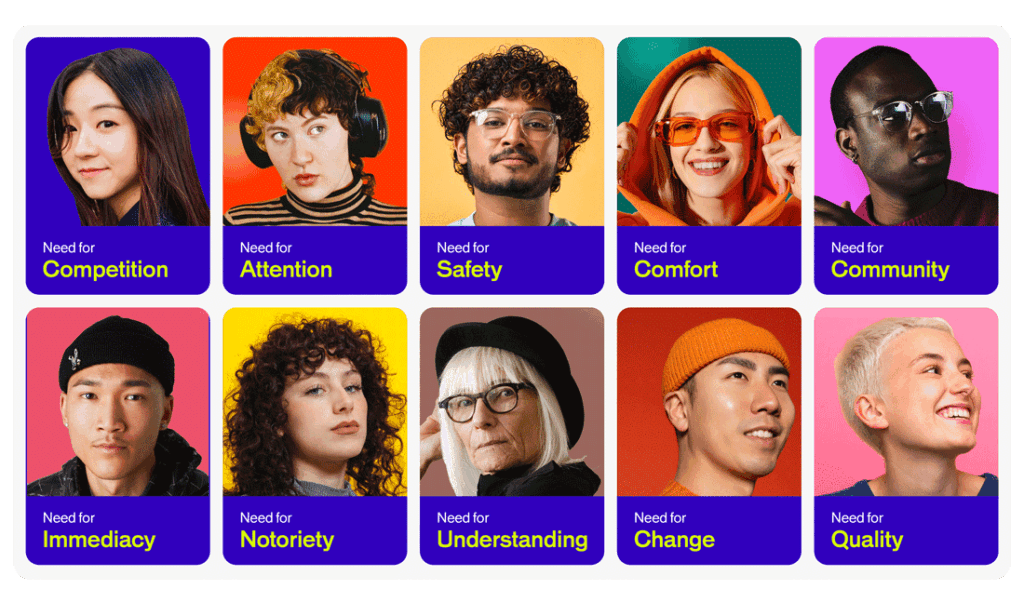The travel and hospitality industry operates in one of the most competitive digital landscapes.
With customers comparing prices, experiences, and options across multiple platforms in seconds, every element of your website can make or break a booking. That’s where feature experimentation, personalization, a/b tests, and rollouts come in—giving travel brands the power to test, learn, and optimize their digital experiences with confidence.
The Power of Experimentation
Experimentation isn’t just about testing button colors or headlines. It’s about de-risking innovation, understanding your guests, and optimizing every experience—from the first website visit to post-stay engagement. With AB Tasty, travel and hospitality brands can:
- Validate ideas before full rollout
- Personalize journeys for every traveler segment
- React quickly to market changes and guest feedback
- Drive measurable business impact—fast
Let’s look at how leading brands are using AB Tasty to solve real challenges and unlock growth. In this article, we’ll explore five travel and hospitality use cases that demonstrate how experimentation and personalization strategies are driving measurable results.
1. Creating Urgency with Countdown Timers

The Challenge:
A major theme park operator had been using countdown timers on their season pass pages during promotional periods, but they had never actually tested whether these timers were driving purchases—or just taking up space.
The Experiment:
The team ran an A/B test to measure the true impact of countdown timers on their season pass sales page. The timer was designed to create urgency and encourage faster purchasing decisions during limited-time offers.
The Results:
The test confirmed what many marketers assume but rarely prove: urgency works. The variation with the countdown timer delivered a +7.2% increase in transaction rate, with particularly strong performance on desktop, where the majority of purchases occurred.
Key Takeaway:
Don’t assume your tactics are working—test them. Even widely used conversion techniques like countdown timers deserve validation through experimentation.
2. Smarter Sorting with Algorithmic Recommendations

The Challenge:
A travel booking platform was sorting their listing pages by ascending price—a logical approach, but one that didn’t always surface the most relevant offers for customers. Lower prices don’t always mean better value, and the team suspected they were leaving revenue on the table.
The Experiment:
Using feature experimentation, the team tested a new “Recommended” sorting algorithm that factored in product relevance and historical performance data, rather than price alone.
The Results:
The smarter sorting approach delivered impressive gains:
- +2.8% revenue uplift
- +4.6% increase in average order value (AOV)
Key Takeaway:
How you present options matters as much as what options you present. Algorithmic sorting that considers relevance and performance can guide users toward better choices—and better business outcomes.
3. Turning Dead Ends into Opportunities with Personalized Alternatives

The Challenge:
When travelers searched for a route with no available flights, they hit a frustrating dead end: a cold “no flights available” message. This led to drop-offs, lost revenue, and a poor user experience.
The Experiment:
Instead of showing an error message, the team implemented a personalized experience that displayed smart alternatives—nearby airports, flexible date options, or connecting routes.
The Results:
The personalized approach transformed a point of frustration into a conversion opportunity:
- +35% increase in flight search modifications
- +14% improvement in conversion rate
Key Takeaway:
Every dead end is an opportunity in disguise. Personalization can rescue frustrated users and turn potential abandonment into completed bookings.
4. Testing Discount Framing: Percentages vs. Monetary Values

The Challenge:
A travel company was presenting discounts as percentages (e.g., “Save 15%”), but they weren’t sure if this framing was maximizing customer response. Would travelers respond better to seeing the actual monetary savings?
The Experiment:
The team tested a variation that displayed monetary savings instead (e.g., “Save up to $1,500 per couple”) across all devices.
The Results:
The monetary framing significantly outperformed the percentage version:
- +41% increase in revenue
- +18% more clicks on the homepage promotional link
Key Takeaway:
How you frame value matters. For high-ticket travel purchases, concrete monetary savings can feel more tangible and compelling than abstract percentages.
5. Elevating Trust Signals for Higher Conversions

The Challenge:
A travel operator had key trust signals—their Price Promise guarantee and 24/7 customer support—displayed in a banner on their homepage. However, the banner was positioned too low on the page, limiting its visibility and impact on user confidence.
The Experiment:
The team tested moving the trust signal banner higher on the page to make these reassurances more prominent earlier in the customer journey.
The Results:
The simple repositioning delivered remarkable results:
- +35% increase in transaction rate
Key Takeaway:
Trust is everything in travel. Make sure your credibility signals are visible early in the user journey—don’t bury them below the fold.
Why Experimentation Matters for Travel & Hospitality
These five use cases illustrate a fundamental truth: assumptions are expensive. Whether it’s the effectiveness of urgency tactics, the optimal way to sort listings, or how to frame a discount, the only way to know what works is to test it.
Experimentation gives travel and hospitality brands the ability to:
- Validate ideas before full deployment – Reduce risk by testing changes with a subset of users first
- Make data-driven decisions – Move beyond gut feelings to measurable results
- Personalize at scale – Deliver the right experience to the right user at the right time
- Iterate quickly – Learn fast, fail fast, and continuously improve
In an industry where margins are tight and competition is fierce, the brands that embrace experimentation will be the ones that thrive.
Ready to Start Experimenting?
The travel and hospitality industry is perfect for optimization. From booking flows to search results, from promotional messaging to trust signals, every touchpoint is an opportunity to improve the customer experience and drive business results.
At AB Tasty, we have dedicated CSMs specialized in travel and hospitality to help you on your experimentation journey. Looking to see which clients are already onboard? Check out our customers page!
The question isn’t whether you should be experimenting—it’s how quickly you can start.
FAQs
Why should travel and hospitality brands invest in an experimentation platform?
Travel and hospitality brands need to optimize complex journeys: search, comparison, booking, and post-booking. AB Tasty provides a unified experimentation and personalization platform that lets you: – Test changes to search, listing, and booking flows with A/B and multivariate testing
– Roll out new features safely using feature flags and progressive rollouts
– Personalize experiences for different traveler segments (families, business, frequent flyers, etc.)
How does AB Tasty help optimize booking funnels on travel websites and apps?
AB Tasty lets you experiment across every step of the funnel from homepage to booking flows. With client-side and server-side experimentation, you can optimize both front-end UX and back-end logic (like ranking algorithms or pricing rules) without compromising performance.
Can AB Tasty support feature experimentation, not just marketing A/B tests?
Yes. AB Tasty goes beyond traditional marketing tests with Feature Experimentation & Rollout. You can use feature flags to control who sees new features, run server-side experiments on your booking engine, search logic, and algorithms, and use progressive rollouts to launch features gradually, monitor impact, and roll back instantly if needed
How does AB Tasty help personalize experiences for travelers?
AB Tasty’s personalization capabilities enable you to tailor journeys based on behavior, context, and profile data. This includes showing different content or offers to first-time visitors vs. loyal customers, surfacing relevant destinations, hotels, or packages based on previous searches or bookings, and more!
Is AB Tasty suitable for high-traffic, seasonal travel campaigns?
Yes. AB Tasty is built to handle the seasonality and peaks that are typical in travel and hospitality. You can confidently test urgent campaigns—like flash sales or early-bird offers—during your busiest periods while keeping control over performance and user experience.
Can non-technical teams in travel and hospitality use AB Tasty?
Yes. AB Tasty is designed for marketing, product, and development teams:
- Marketers can use the visual editor and ready-made widgets to launch tests and personalization without code
- Product teams can design and analyze experiments on flows, features, and UX
- Developers can implement feature flags, server-side tests, and complex rollouts
This collaborative approach helps travel brands move faster while keeping control and governance over what goes live.









